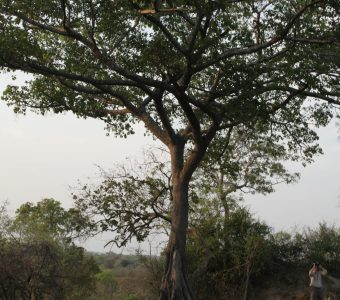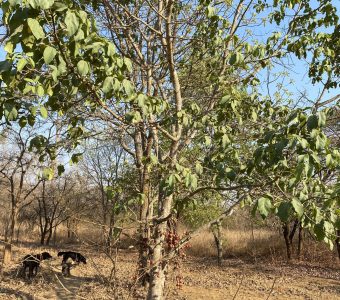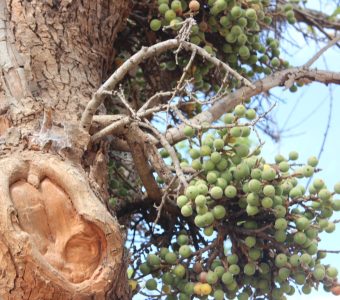


Botanical Name: Ficus sur
Common Name: Cape Fig, Mukunyu, Mukuyu, Kakeke, Mtowe, Mukuyu
Plant Family: Moraceae (Fig Family)
Growth Form, Habitat and Distribution: A large, semi-evergreen tree, the base often swollen, branches heavy and spreading with a roundish crown. Occurs throughout Zambia, frequently in riparian, Munga and other woodlands, sometimes in swamp forest and on rocky hillsides. A canopy species in evergreen forest, reaching 25m or more with a small crown. Ficus sur is not a strangler fig.
Size: Height up to 25m, usually 12 to 15m, spread up to 30m.
Bark: Grey, pale grey, or creamy grey, smooth at first becoming rougher with raised scales and darker with age. Produces copious white latex.
Leaves: Simple, alternate, or spiralled, ovate, to elliptical, very variable 4 to 15cm, shiny dark green above, paler below, hairless, apex tapering, margins broadly toothed, new leaves distinctively bronze-red. Petiole up to 6cm and grooved.
Flowers: June to September. See fruit – flowers internal.
Fruit: In dense branched clusters on the bole, branches and sometimes roots, round, up to 4cm, yellow, becoming red, mottled with cream, ripening in most months, but mainly September to March.
Uses: The fruit are edible and also eaten by animals and birds and make a good jam. Thought to enhance milk production in cattle. The wood is soft and light and used for drums. All parts are used in traditional medicine. A good shade tree, grown easily.
